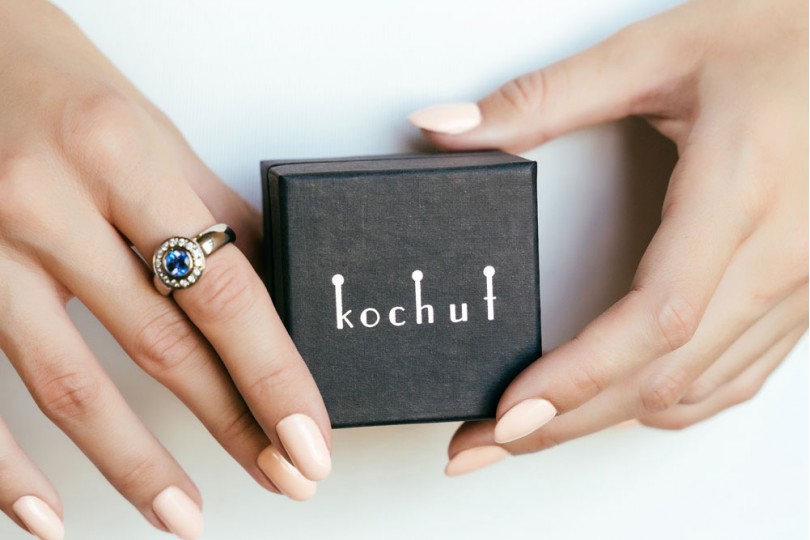Mokume Gane Jewelry: The Art of Japanese Metalworking
 18151
18151Friends, you may have noticed that our site has a separate catalog for Mokume gane jewelry. For those who have paid attention to them, it is apparent that this technique originated in Japanese culture and was later adopted by Europeans. However, have you ever wondered about the reasons for the development of this technique? What led to the creation of Mokume gane and what was its purpose in Japanese culture?
Today, we invite you to take a mini-historical tour of Japanese culture and witness how mokume gane jewelry is being created.
The story of Mokume-gane
Mokume gane is an ancient Japanese metalworking technique invented in feudal Japan by sword masters. Mokume gane translates as "metal wood texture". In those days, it was used primarily to decorate the hilt of samurai swords. But not every samurai could afford such luxury, because this service was expensive.
However, almost immediately the masters realized that the mysterious technique can be used not only for weapons but also for making jewelry. And now you can wear works in the Mokume technique, and not carrying a few kilos of sharp metal with you.

Japanese culture served as the foundation for the development and refinement of Mokume-gane. However, many craftsmen around the world appreciate this jewelry technique. But not every jeweler is capable of mastering it.
How Mokume Gane Jewelry is Made
Mokume Gane is a complex and intricate metalworking process that involves fusing together different layers of metal to create unique patterns and designs. Here is an overview of the process involved in making Mokume Gane jewelry:
Materials Used
Selection of metals: Mokume Gane is typically made by fusing together two or more layers of different metals such as gold, silver, copper, and platinum. These metals are chosen for their unique properties and colors, which contribute to the final design of the jewelry piece.
Preparation of metals: The chosen metals are cleaned, flattened, and stacked together in alternating layers. The layers are then heated and pressed together using a hydraulic press to form a solid billet.
Techniques Used in the Creation of Mokume Gane
Billet creation: The billet is the starting point for all Mokume Gane jewelry pieces. It is created by repeatedly heating, flattening, and restacking the metal layers until the desired pattern and thickness is achieved.
Pattern development: The billet is then cut into sections, revealing the unique pattern created by the fusion of the different metals. The pattern can be manipulated further by etching, carving, or sandblasting the metal surface.
Shaping and finishing: Once the desired pattern is achieved, the metal is shaped into the desired jewelry piece using traditional metalworking techniques such as sawing, filing, and soldering. The piece is then polished, and additional details such as gemstones or engraving may be added.
Mokume Gane jewelry making requires a great deal of skill, patience, and attention to detail. The result is a truly unique and stunning piece of jewelry that is a testament to the beauty of Japanese metalworking. We understand that it may be hard to visualize the process of crafting mokume gane, which is why we produced a video that shows the creation of the Mokume gane ring "Haiku" from beginning to end.
We believe that crafting Mokume gane is a true form of alchemy, requiring the master to possess exceptional precision, accuracy, and skill. When an artist creates a Mokume jewlery piece, they are highly attuned to the metal's characteristics, treating them with utmost care and sensitivity to ensure they do not "cry."
What makes Mokume gane so unique?
Truly unique design: No two Mokume Gane pieces are exactly alike, making each piece unique and one-of-a-kind.
Timeless beauty: Mokume Gane jewelry has a timeless quality that makes it both modern and traditional at the same time.
Versatility: Mokume Gane can be used to create a variety of jewelry pieces, from rings and bracelets to pendants and earrings.
Does Mokume gane jewelry need special care?
Mokume Gane, just like another jewelry requires some care to maintain its beauty and durability. To clean your Mokume Gane rings or earnings, it is important to avoid harsh chemicals or abrasives that can damage the metal surface. We recommend using a soft, lint-free cloth to gently wipe away any dirt or debris from the surface of the jewelry. If necessary, you can use mild soap and warm water to clean the jewelry, and rinse thoroughly to avoid any soap residue. After cleaning, make sure to dry the jewelry thoroughly to prevent water spots or damage to the metal. These are the basic rules that apply to any kind of jewelry.
Conclusion
Unpredictability, rarity, and complexity are the three factors that make Mokume-gane jewelry truly valuable and expensive. If you appreciate luxury, exclusivity, and craftsmanship, then these products are perfect for you.
Only the Mokume-gane technique allows metals to retain their individuality, properties, and character while beautifully interweaving with one another to form a unique and intricate pattern. Due to its uniqueness and fully manual manufacturing process, the resulting pattern will never be replicated in any other product, making it even more special.
Leave a comment via Facebook:
Kochut and our partners use cookies on this website. Some of them are required for the site to function properly, but the following cookies are optional:
— cookies that analyse website usage;
— cookies used to personalize the site;
— cookies used for advertising and social media purposes;





 9152
9152
